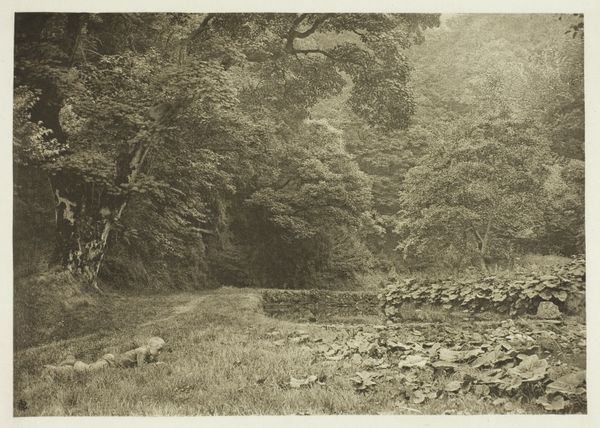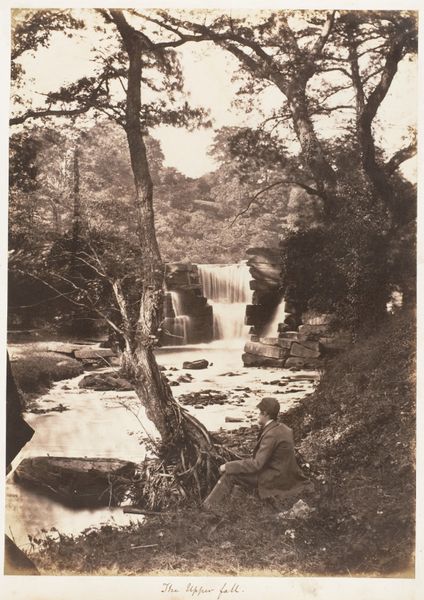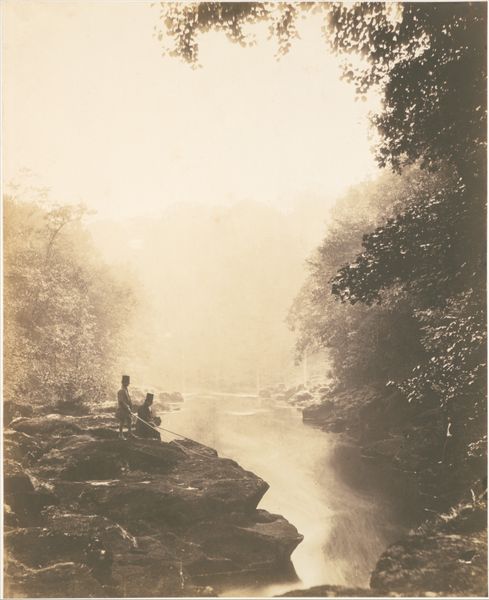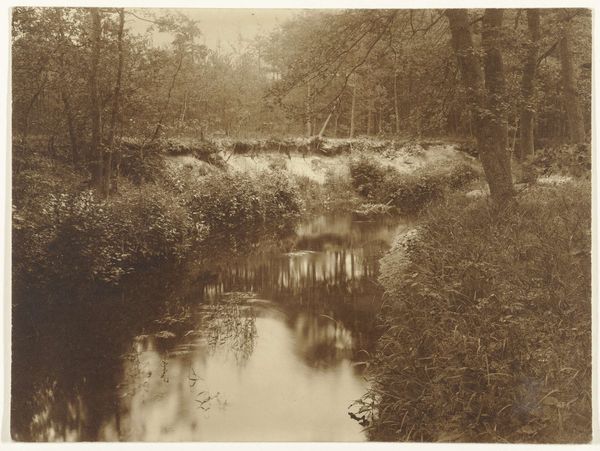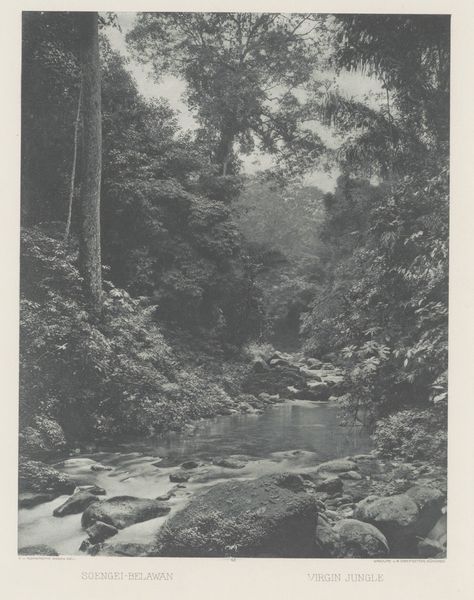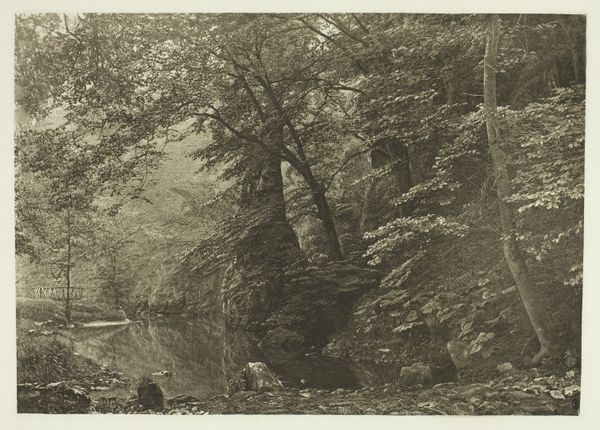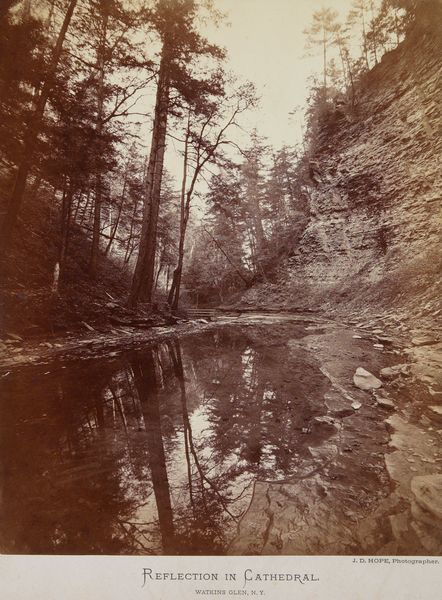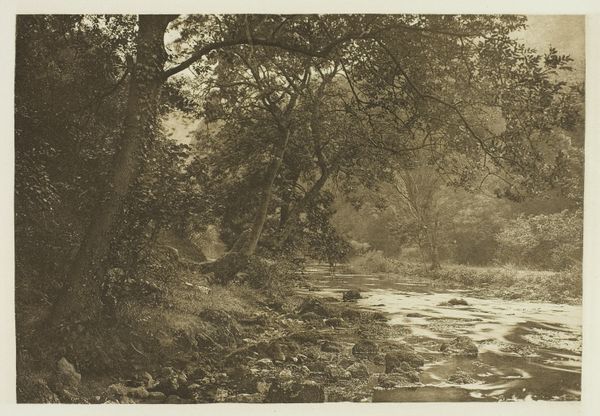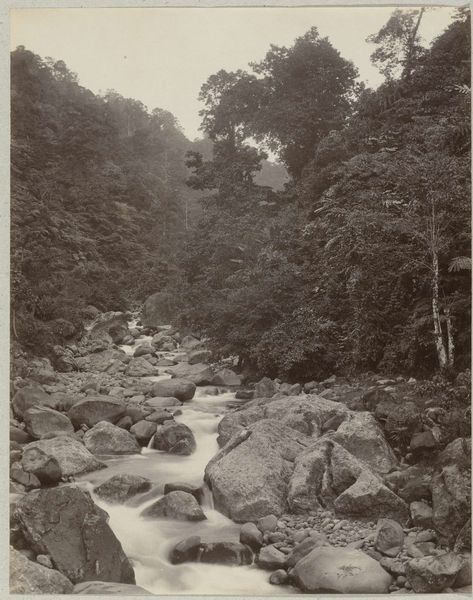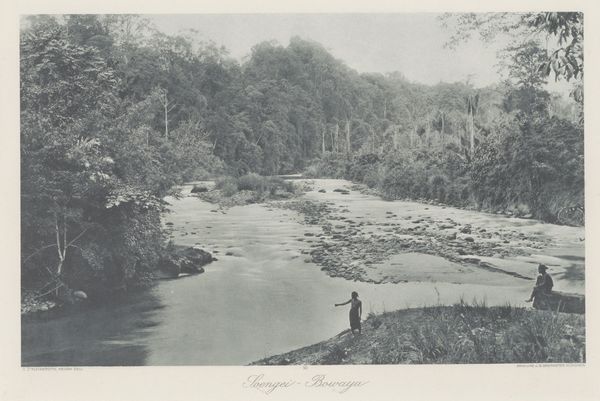
plein-air, photography
#
impressionism
#
plein-air
#
landscape
#
nature
#
photography
#
nature friendly
#
nature
#
realism
Dimensions: 14.8 × 20.4 cm (image); 16.4 × 21.6 cm (paper); 24.9 × 32 cm (album page)
Copyright: Public Domain
Curator: Peter Henry Emerson's "In Dove Dale. 'Habet!'" created circa 1880, captures a scene in what appears to be an English river valley. The print, a photograph, is currently held in the collection of the Art Institute of Chicago. Editor: My first impression is one of quiet serenity. The monochrome palette creates a very still, almost melancholic atmosphere. It's beautifully composed though, with a lovely distribution of light and dark tones that give a sense of depth. Curator: The composition certainly is deliberate. Note how the fisherman, positioned to the left of the frame, isn’t merely a subject, but contributes to a greater harmony with the natural forms around him. The soft focus, characteristic of Emerson's style, further unifies the disparate elements. Editor: From a cultural perspective, it echoes the growing interest in landscape photography and the picturesque aesthetic during that period. Think about how photography was being used to document the beauty of nature and promote outdoor recreation, fitting into larger discussions about conservation and the public's relationship to nature. Curator: Precisely. Emerson was a key figure in the movement to establish photography as a fine art, on par with painting. His involvement in 'naturalistic photography' encouraged a focus on truthful depiction of nature through the lens. "Habet!" in the title, of course, a Latin phrase often used during gladiatorial combat—suggests a triumph of sorts, perhaps referencing the capture of a fish or a successful hunting excursion in general. Editor: It also raises interesting questions about the act of photographing. The choice of title—"Habet!"—could imply Emerson is placing himself, the photographer, in a position of power, 'capturing' and immortalizing this scene. There's something subtly predatory there. What sort of social narratives and power structures related to class are going on when photography makes such themes accessible to different strata of society? Curator: An intriguing interpretation. The use of platinum print may indicate an element of value related to the craft that brings a further element to its historical status, if we accept Benjamin's discussion in Art in the Age of Mechanical Reproduction. But perhaps more literally, it reflects Emerson’s dedication to crafting technically superior photographic prints which gives way to a much better tonal palette compared to other printmaking methods. The textures within this artwork also enhance it, when observing how its materiality helps convey its visual narrative Editor: Overall, it’s a piece that is successful in marrying art, recreation, and, as we touched upon, ideas of class in Victorian England, making it a key point to be added to any study looking at those particular contexts in general. Curator: Indeed, a compelling example of how form, intention, and historical context converge.
Comments
No comments
Be the first to comment and join the conversation on the ultimate creative platform.

